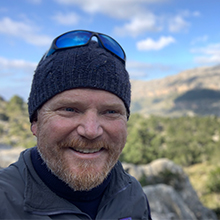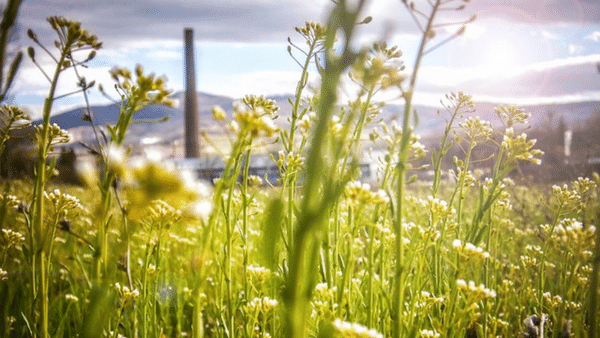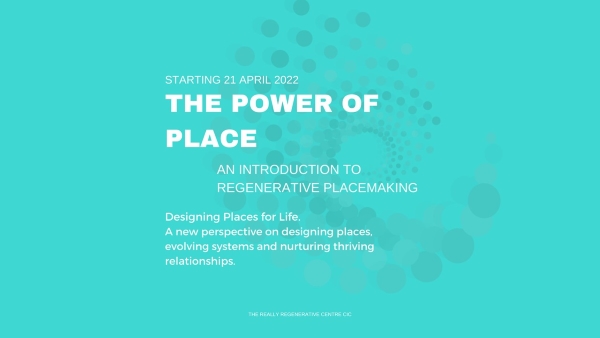Why moving away from constant growth and instead investing in the potential of people and places is the key to addressing the climate crisis
Our times call for “stubborn optimism”, as Christiana Figueres and Tom Rivett-Carnac suggest in their 2020 book The Future We Choose. We all owe them gratitude for their very personal effort in making the 2015 Paris Agreement possible. Since then, they have continued to stimulate action towards a transformative response to climate change. Together with the outstanding strategic work of Nigel Topping, as the UK’s High Level Climate Action Champion in the run-up to COP26, there is a basis for hope that we will see more bold and coordinated action within and across sectors after the Glasgow conference.
Pathways to a regenerative future
The capacity building work that Bill Sharpe and the ‘Future Stewards’ coalition have undertaken with industry-specific climate champions around the world by training them in the use of the ‘Three Horizons’ pathways practice, will provide a shared mental framework to address and implement systemic transformations at local, regional and global scale. We urgently need to get better at discerning how our visions of the future and our problem-solving mindset affect our individual and collective agency in working with the future potential of the present moment.
To navigate this turbulent transition and steer our path towards a regenerative future requires the capacity to listen and learn from diverse perspectives. Without the need to agree on everything, we can nevertheless learn to disagree more intelligently as we build collective capacity for transformative innovation.
The Three Horizons pathways practice developed by Sharpe and colleagues in the International Futures Forum is distinct from the ‘Three Horizons of Growth’ used by McKinsey. It allows us to collectively explore sector – or location-specific – transformations through the managerial perspective of Horizon 1, the entrepreneurial mindset of Horizon 2, and the visionary call of Horizon 3 for profound systemic and world-view transformations that will enable a viable future. All three perspectives are necessary to contribute to a regenerative future.
The human potential for regeneration
A regenerative human impact on Earth is not only possible but has been the norm for most of the deep history of our species. Oral traditions of indigenous cultures that pre-date agricultural or fossil fuel-based societies describe how human beings used to nurture abundance and diversity while actively regenerating the health of local and regional ecosystems.
Our indigenous ancestors predominantly lived as bioregionally based regenerative cultures. Scientific evidence suggests that entire forest ecosystems in the Colombian Amazon, the old growth forests of the Pacific North West and the ‘lost forest gardens’ of Europe were shaped by our distant ancestors, who nurtured these ecosystems into increased diversity, biological productivity and abundance. To this day 80% of global biodiversity is found within these ‘hot spots’ of indigenous territories around the world. To create a regenerative future we must value and humbly learn from the indigenous knowledge and practices that informed our regenerative past.
We must ask ourselves: how do we become healing expressions – rather than owners – of place? How do we participate appropriately as we aim to align ourselves with life’s evolutionary pattern of creating conditions conducive to life? How can we better discern which modern technologies and innovations truly support us in co-creating diverse regenerative cultures everywhere?
Are we treating symptoms or causes?
The 2021 Intergovernmental Panel on Climate Change (IPCC) report clearly states that “limiting human-induced global warming to a specific level requires limiting cumulative CO2 emissions, reaching at least net zero CO2 emissions, along with strong reductions in other greenhouse gas emissions”. To do so is clearly an urgent prerequisite for a regenerative future. Yet we need to simultaneously address the deeper causes underlying the climate crisis. We will fail if we structure our response exclusively around carbon emissions.
At best, addressing climate change through the carbon lens will only buy us time. At worst, techno-fix solutions and emissions trading will exacerbate the problem. How do we avoid carbon myopia and its unintended consequences? Precisely because of the urgency and the decreasing options if we get it wrong again, we should also ask ourselves: what are we missing as we focus in on carbon metrics and structure policy to stimulate emissions reduction? Is ‘fighting climate change’ the appropriate framing? Could it be that to ask ‘how do we get to net-zero emissions by 2050’ is a dangerously insufficient approach that predisposes us to potentially ignore root causes?
The deep commitment to making a positive difference by many people driving the ‘race to zero’ is not in question. Yet, it simply can’t be emphasised enough that our culturally dominant narrative of ‘separation from’, ‘power over’ and ‘ownership of’ nature creates the mistaken belief that we can manage, technologically innovate and (carbon) trade ourselves out of the evolutionary dead end we have been heading into for a couple of centuries.
As Camilla Moreno and colleagues warned in their 2015 essay, Carbon Metrics: Global abstractions and ecological epistemicide, published by the Heinrich Böll Foundation: “Carbon or GDP alone will not point us the way. We need to challenge our mental infrastructures, how we acquire the established foundations for our thinking. …the all-powerful carbon paradigm can entail profound injustices. Beyond carbon, we need a multi-dimensional perspective, one which is aware of the metabolic, life-maintaining processes of the planet, taking into account its natural limits, as well as the fundamental rights and needs of all human beings and the ground rules of participation and inclusion as we move on.”
Regenerative development does not solve global problems through scaling up universally applicable solutions. It is not aiming to deliver permanent solutions; rather, the focus is on improving our capacity to co-create and keep transforming in response to changing context. When we talk about co-creating ‘regenerative futures’ it is best to let go of the notion that we will arrive and live happily ever after. Co-creating regenerative cultures is an ongoing community and place-based process of learning.
Participation and inclusion are not just social ideals to aim for, but fundamental prerequisites for the emergence of diverse regenerative cultures everywhere. Co-creating a regenerative future is about supporting people, places and cultures to express their unique contribution to the health and vitality of the nested complexity in which we are embedded. To do so simultaneously serves ourselves, our communities and life as a whole.
The potential of people and place
Faced with the climate emergency, humanity is now undergoing a species-level rite of passage. We are challenged with nothing less than the redesign of the human impact on Earth. It is time to become mature members of the community of life and, as such, to learn how to create conditions conducive to life. Doing so appropriately invites us to pay attention to and learn from the bio-cultural uniqueness of place – community by community, ecosystem by ecosystem, bioregion by bioregion.
Paradoxically it seems that the path towards a globally regenerative human impact on Earth is one of local and regional regeneration. It is not a global problem-solving exercise, but rather an ongoing collective learning and capacity-building process of people in place. The American essayist and poet Gary Snyder called this process “reinhabitation”. We are coming home and rejoining the family of life.
Abstraction and generalisation, metrics and certification, and control and prediction are central to a problem-solving approach. This old way of working remains within the mental scaffold of what the thought leader in responsible business development, Carol Sanford, calls the “extract value”, “arrest disorder” and “do good” paradigms of modern living. To live regeneratively is to act from within a fourth paradigm that Sanford describes as: “evolve capacity/regenerate life”. An approach aimed at building capacity and manifesting the potential of people and place focuses our attention on uniqueness and specificity, qualities and trust, and participation and learning, as we aim to regenerate life.
In a conversation I had with Bill Reed, Principal at Regenesis Group, he remarked “we can’t save the world, we can only save places”. For me this is an important reminder that what we do locally has regional and global effects. Just like the health of your body depends on healthy cells and organs, planetary health depends on healthy communities, ecosystems and bioregions.
To bring about the now urgently necessary transformations over the coming decades we must reinhabit the places and ecosystems we live in as a regenerative and healing presence. Humans have the potential to nurture biodiversity and heal ecosystems. If we begin to think and work over ecological time scales, we can heal many of the ecosystems, communities and places damaged by centuries of exploitation and suppression of the rights of the world’s indigenous people.
Responding to climate change is about much more than the ‘race to zero’. An adequate response necessitates becoming conscious of our deeper relationship to life as a nested, regenerative community. Life is a planetary process that has created the condition for more life to evolve and flourish over the long journey of 3.8 billion years. Our success and failure in co-creating regenerative futures will depend on our ability to realign with the syntropic evolutionary patterns of life itself – moving from competitive scarcity towards collaborative abundance.
The ReGeneration is rising!
There is a basis for being stubbornly optimistic and confident that we can still choose a regenerative future. I base this belief not on denying the real and present danger that cataclysmic climate change is imminent if we don’t change our current trajectory, but in my optimism that people everywhere are connecting with the regenerative impulse.
Here are just a few of those reasons for optimism: this year marks the launch of the United Nations Decade on Ecosystems Restoration (decadeonrestoration.org) and landscape-scale regeneration projects, such as landscapes.global, are proliferating. There are national initiatives in Costa Rica (through Common Earth) and Australia’s Regenerative Songlines projects. Regenesis Institute is training regenerative practitioners which have formed regional networks. Carol Sanford is supporting people around the world through her development groups for change agents.
Regeneration International is an initiative connecting the rapidly growing regenerative agriculture movement. The Capital Institute in New York has created the Regenerative Communities Network of bio-regionally focused regenerative economy projects. Kate Raworth’s Doughnut Economics Action Lab is taking regenerative economics to active citizens engaged in creating thriving places.
Many more people are offering regenerative learning journeys and programmes to link collectively into the process of co-creating regenerative cultures.
I am under no doubt that the RSA’s Regenerative Futures programme will inspire many more people to join the ReGeneration. I hope you are one of them!
Daniel Christian Wahl is a consultant and educator in regenerative development and author of the book Designing Regenerative Cultures (Triarchy Press). He was awarded the RSA Bicentenary Medal on 7 December 2021 in recognition of his outstanding contribution to regenerative design.
This article first appeared in the RSA Journal Issue 4 2021
Related articles
-
Regenerative organisations: the time is now, the place is here
Blog
Joanna Choukeir
Regenerative organisations are vital to our regenerative future. The time is now for the RSA to emerge as such an institution.
-
What is Regenerative Place-making?
Fellowship news
Jenny Andersson
Creative strategist and regenerative practitioner, Jenny Andersson, explores regenerative place-making as coming home to place.
-
Place: the missing key for unlocking a circular economy
Blog
Josie Warden
Josie Warden on why we need to focus on and resource place-based change to enable a regenerative and circular economy.




Be the first to write a comment
Comments
Please login to post a comment or reply
Don't have an account? Click here to register.